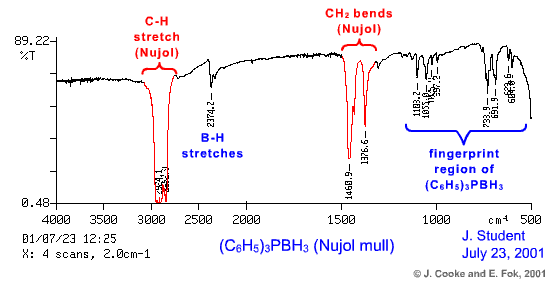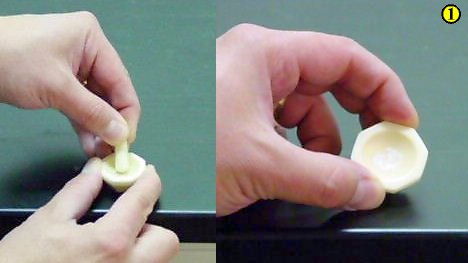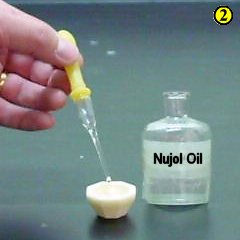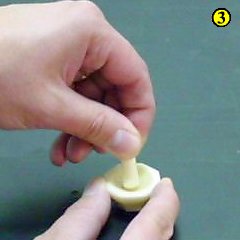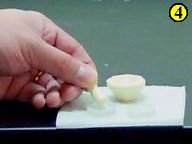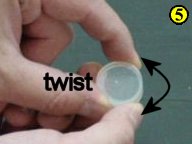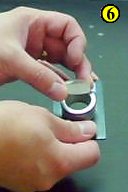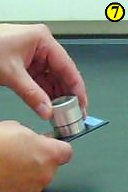|
Preparing a Nujol Mull IR Sample A Nujol mull is generally only used for solid samples and is quite different from the thin film and cast film methods. The solid is finely ground and mixed well with Nujol (a hydrocarbon oil). The resulting IR spectrum therefore consists of both the solid sample and Nujol oil.
The Nujol mull method has the advantage that all solids (not just those soluble in organic solvents, as in the cast film method) can be treated in this manner, but has the disadvantage that the IR active C-H stretches (approx. 2990 - 2820 cm-1) and bends (approx. 1490 - 1420 and 1390 - 1360 cm-1) in Nujol oil might obscure IR active bands in the solid product. For this reason, it is an excellent practice to obtain a reference spectrum of Nujol oil and tape it into your lab notebook.
A Few Practical Problems to Watch For
|
||||||||||
|
Contact the Webmaster |
||||||||||
